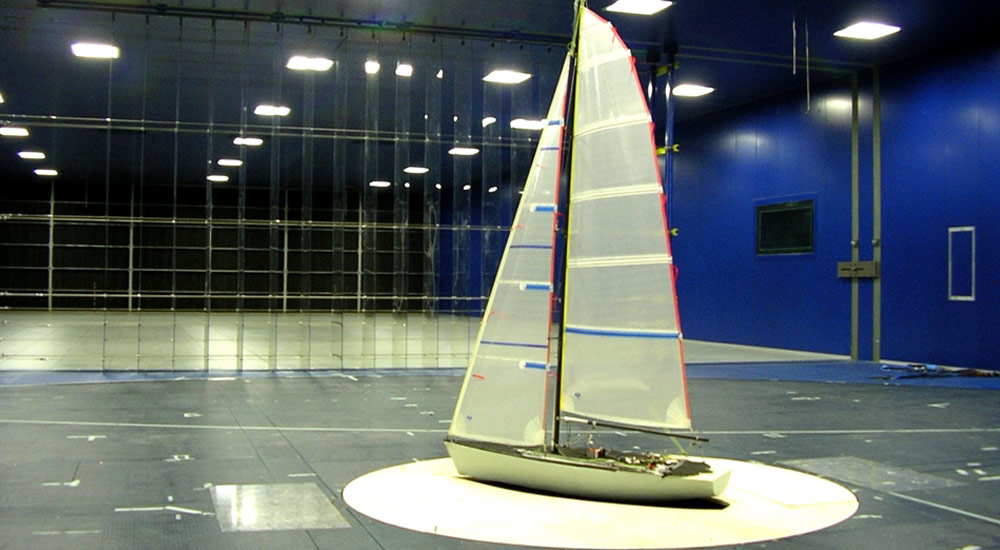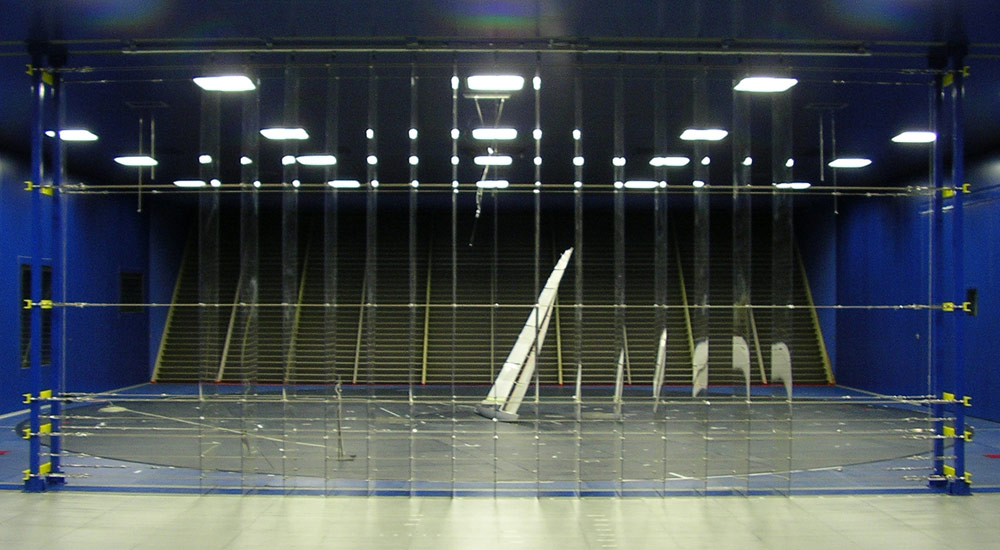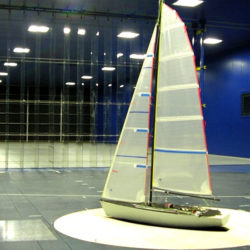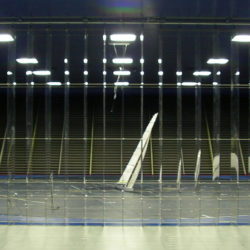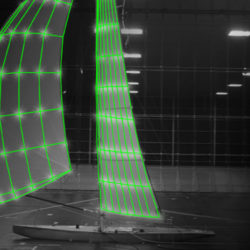Sails & marine
In the last few years, Wind Tunnel tests have become an essential design tool for improving performance of sailing yachts taking part in top-level competitions, such as the America’s Cup, Volvo Ocean Race, and all the Olympic classes. Tests are useful for sail plan, sail design, rig tuning, keel and rudder shape optimization. The facility performances make Politecnico di Milano wind tunnel the most suitable for sailing yacht applications.
In the boundary layer test section, the onset flow can be made to match the desired vertical wind profile in terms of both absolute value and direction, using a devoted twisted flow device. The wide dimensions of this test section make it possible to test large-scale models, typically scale of 1:10, or two models at the same time, to investigate blanketing effects for tactical purposes. A six-component force balance measures the aerodynamic forces, and a sail flying shape detection system simultaneously produces a 3D geometry of the flying sail’s shape that can be used for CFD analysis. In the low-turbulence section, yacht appendages are tested in high Reynolds number conditions.
Yacht models of quite large size are used, with significant operational advantages, including: the sails are large enough to be made using normal sail making techniques, the model can be rigged using standard model yacht fittings and small dinghy fittings (commercially available model yacht sheet winches can be used) and, most importantly, the deck layout can be reproduced around the sheet winch, allowing all the sails to be trimmed as in real life.
The forces are shown in real time on the virtual panel designed on the computer screen, so that the sail trim can be optimised: the effects of trimming the sails on the driving and heeling forces can be directly visualised.
Several yacht testing techniques have been developed during the years with the aim of improving the simulation of sail modelling in the wind tunnel. In particular, a hardware-in-the-loop (HIL) system based on a real-time Velocity Prediction Program (VPP) and a servomechanism enabling the model yacht to heel dynamically in respose to the aerodynamic forces in the wind tunnel has been developed. The measured forces are converted in force coefficients and entered into the real time VPP. The converged solution is displayed on the screen panel allowing adjustment of the sail trim for maximum yacht speed.
CFD analysis is validated with the experimental result and then allow to investigate the local flow behavior all over around the yacht model.

